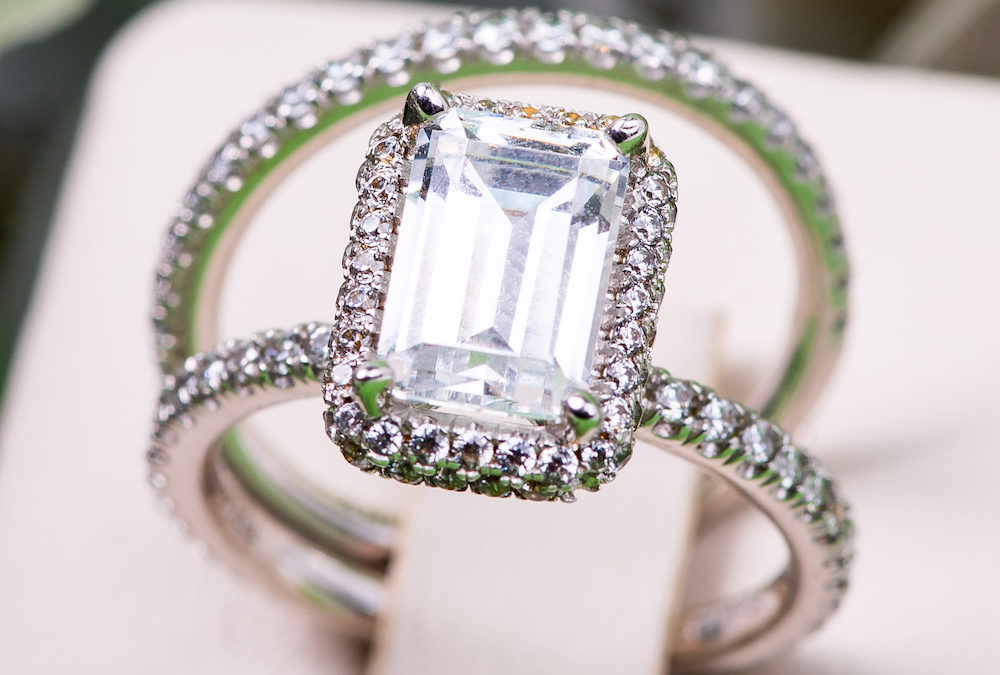One of the questions that we often get asked the most is how to purchase a diamond. Whether it be for an engagement, an anniversary gift, a mother’s day gift or just because, we completely understand how daunting it can be to find just the right one – and also know that you are getting a quality diamond. As graduate GIA gemologists, we understand the importance and significance of diamonds and we only offer GIA lab-certified diamonds.
Let’s start with addressing what the industry refers to as “the 4 C’s.” These are Cut, Color, Clarity and Carats.
Cut
Cut is the most important of the 4 C’s because it can have the greatest effect on a diamond’s beauty. Diamonds are known for their “sparkle” because of their many facets, how they are proportioned and their overall finish. A poorly cut diamond will not capture the light as well and will look dull and grayish. The more precise the cut, the more captivating the diamond will be.
The grading scale for determining cut ranges from:
Excellent – Very Good – Good – Poor
We strongly suggest staying within the Excellent to Very Good range.
Color
Probably one of the most subjective of the four C’s is diamond color. Generally speaking, the less color there is in a diamond, the higher the color grade will be. The color scale begins at Grade D for colorless and goes to Z for diamonds of a yellowish hue. Ideally, a diamond sparkles best when there is less color within the body of the stone. We always suggest to our customers when viewing for color that they: a) stay above the I color and b) ask to see stones in 2-3 different colors side by side, so that they can visually see the difference. This will encourage our customer to make a decision based on what they see, not what they are told by a grading certificate.
Clarity
The term clarity when viewing a diamond is ensuring that what you are purchasing is “eye clean.” This means that the diamond does not show any inclusions or imperfections that are visible to the naked eye without magnification. It is also important to ask where the inclusions are located within the stone. As no two snowflakes are ever the same, it can also be said the same for diamond inclusions.
The scale for determining clarity is:
Flawless to I1
- VVS = very very slightly included
- VS = very slightly included
- SI = Slightly Included
- I = Included
To purchase a diamond that is flawless is quite rare and if found, also comes with a hefty price tag. Most people tend to purchase stones that are between the VVS and SI range, with the inclusions showing up away from the center of the stone.
Carats
Contrary to popular belief, carats refer to the actual weight of the diamond, not the size. Diamonds are measured in grams with a one-carat diamond weighing 1/5 of a gram. Carats also indicate the “spread” of the diamond, which is how the diamond is measured across the top in millimeters. When purchasing a quality diamond, you want to ensure that the total spread of the diamond looks like what it should weigh.
To put it into clearer perspective, think of carat weight this way………
If you have two paintings on a wall, one that is large by an unskilled artist and one that is small by a Van Gogh, most likely the Van Gogh will always be worth more. A 3 carat diamond that is disproportionate in weight may look more expensive, but a 1.5 carat diamond that is equally proportioned and exceeds the other “C’s” will always be the better choice and value.
We hope that this overview of diamonds will give you a better perspective as you make your decision. Having a good basic understanding of the 4 C’s when purchasing a diamond is key. We understand that this can be an emotional purchase. Fine jewelry is very personal – you should always be able to look at your diamond and treasure it each time you wear it.
